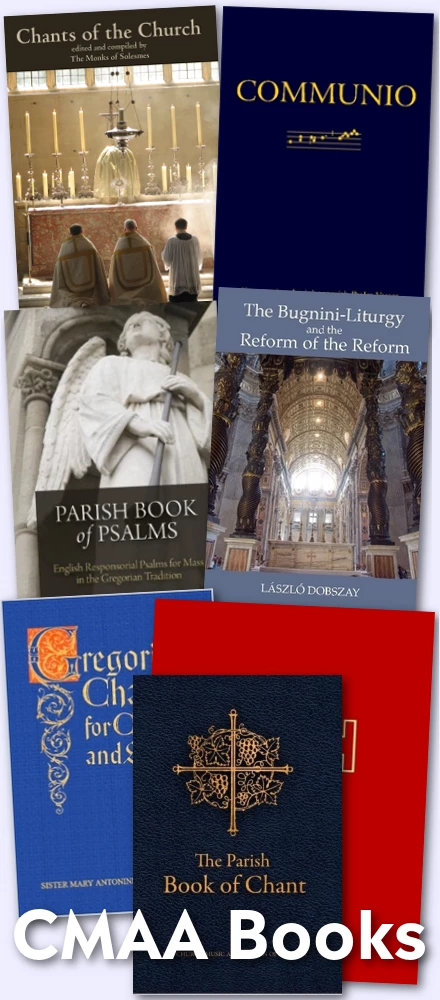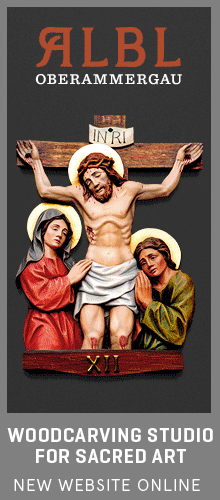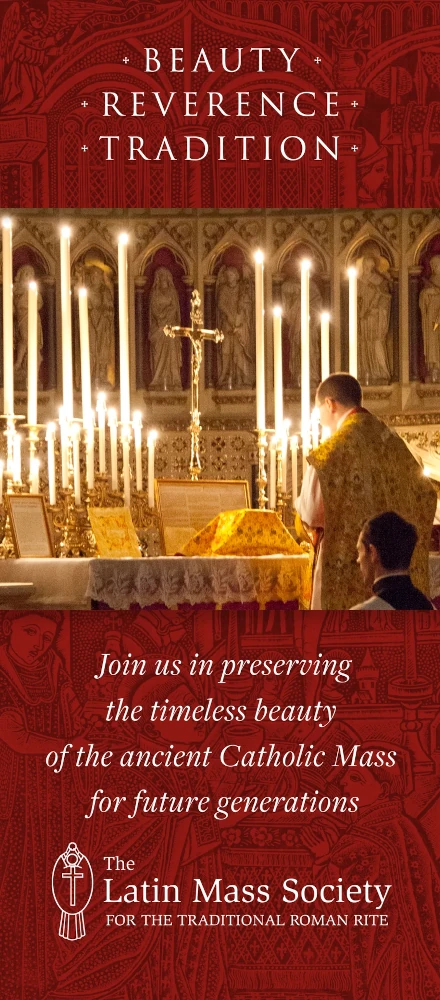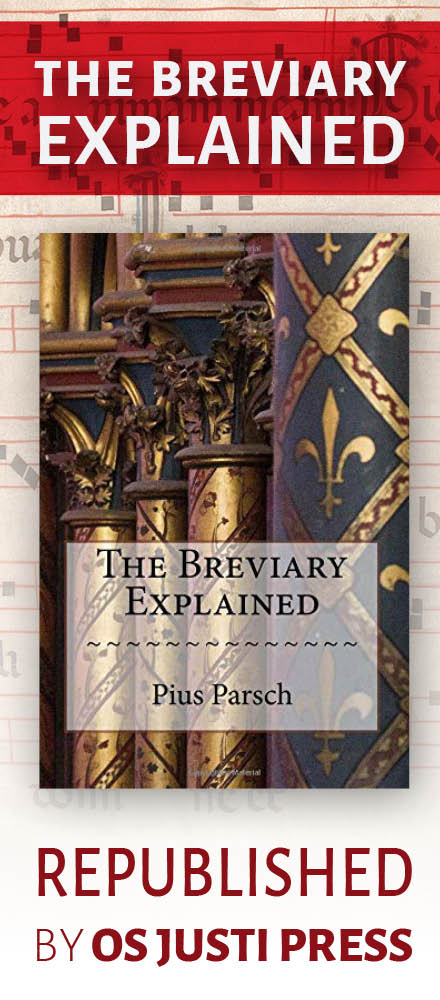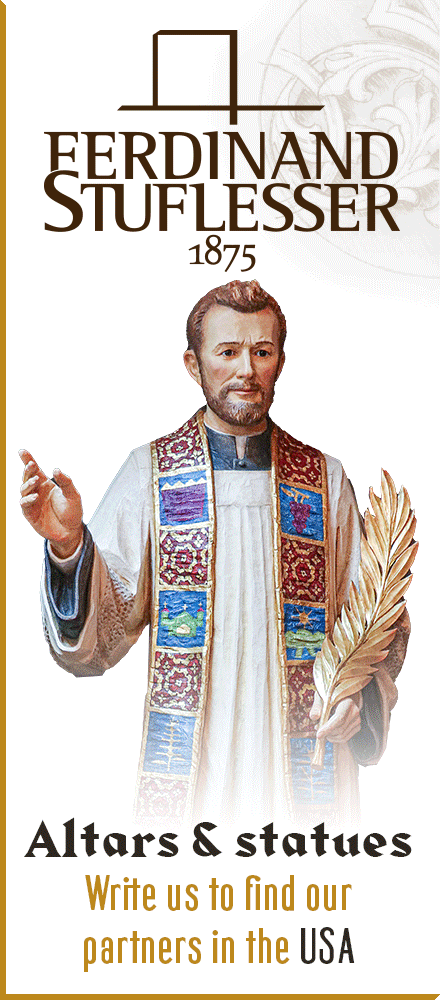The Massacre of the Innocent, by Nicolas Poussin, ca. 1625-29
The biblical description of the slaughter of the Holy Innocents is brief but chilling:
Herod, perceiving that he was deluded by the wise men, was exceeding angry; and sending killed all the men children that were in Bethlehem, and in all the borders thereof, from two years old and under, according to the time which he had diligently inquired of the wise men. Then was fulfilled that which was spoken by Jeremias the prophet, saying: “A voice in Rama was heard, lamentation and great mourning; Rachel bewailing her children, and would not be comforted, because they are not.” (Matt. 2, 16-18).
St. Matthew’s account does not indicate how many were killed in Herod’s effort to murder the Infant Jesus. The Byzantine liturgy mentions 14,000, the Syrian churches speak of 64,000, and some medieval authors, inspired by Revelation 14, 3, speak of a staggering 144,000. Based on fertility rates and the size of the population of Bethlehem and its environs at the time, however, a more realistic estimate places the number of the slain somewhere between ten and twenty.
Matthew is also silent about the date of the massacre, except for hinting that it happened within two years of the apparition of the Magi’s star. The Armenian feast day honoring the Holy Innocents falls on the Monday after the Second Sunday after Pentecost in accordance with a belief that they were killed fifteen weeks after the nativity of our Lord. The Byzantine calendar has the feast on December 29, while the Syrian and Chaldean calendars have it on December 27.
The Church of Rome, from what we can tell, has always kept the feast of “Childermas” (Children’s Mass) on December 28, ever since it first began being celebrated there in the fifth century. In so doing, the Western Church presents an interesting array of Christ’s “counts” on December 26, 27, and 28: first St. Stephen, the Proto-Martyr who is martyr by will, love, and blood; then St. John the Evangelist, who is martyr by will and love (John is considered a martyr because of the attempts made on his life even though he died a natural death); and lastly, the Holy Innocents, who are martyrs by blood alone.
But if they are not martyrs by blood alone, how can they be martyrs at all? For surely a martyr is someone who dies because he consciously professes faith in Christ. The very fact that the Church acknowledges the murder of these little ones as holy martyrdom is itself significant, as it tells us something about the nature of salvation and childhood. A child normally does not attain the use of reason until the age of seven, and even then he is under the care of his parents, who act as a kind of surrogate reason, helping him develop his rational faculties. Yet an infant, under the supervision of another surrogate (his godparents), may be baptized long before he has the ability to believe in the Creed for the simple reason that just as he did not personally choose the curse of original sin with which he was born, so too need he not choose the cure of baptismal grace in order to be saved.
Similarly, the Holy Innocents did not choose martyrdom or even Christ, but this is not due to any failure on their part but to the undeveloped state of their minds. (See this this essay by Peter Kwasniewski.) What matters here, as with baptism, is the action done to them. The fact that they died not only for Christ but instead of Him makes them flores martyrum, the “flowers of the martyrs.” As St. Augustine eloquently puts it: “They are the first buds of the Church killed by the frost of persecution.” [1] The Breviary Hymn for the feast, Salvete Flores Martyrum, alludes to this botanical epithet, along with a touching portrayal of the Innocents playing with their symbols of martyrdom before the altar of God:
You, tender flock of lambs, we sing,First victims slain for Christ your King:Beside the very altar, gayWith palms and crowns, ye seem to play.
The Mass
As this bittersweet image attests, even though martyrdom is a glorious event in which the Church rejoices, it is difficult not to be moved by the thought of helpless toddlers being cut down in the streets. The Church, therefore, taking heed of Matthew’s citation of “Rachel weeping for her children” from the prophet Jeremiah, assumed the role of a second Rachel and mourned for these little ones. Except for when the feast fell on a Sunday, violet was the liturgical color, and the Gloria and Alleluia were suppressed. In the early centuries, Roman Christians also abstained from meat on Holy Innocents’ Day. It was on the octave day of the feast (January 4) that the Church turned her thoughts to the young martyrs’ glory, the Mass being celebrated in red with the Gloria and Alleluia. In the 1950s, however, the octave was eliminated, and so currently in the 1962 calendar red is the color of Childermas, and the Gloria and Alleluia are used (See Gregory DiPippo’s treatment of the subject.)
The station church of the day, St. Paul Outside the Walls, was chosen because it is believed that it contains the bodies of several of the Holy Innocents.
Coventry Carol
And since we broached the subject of music earlier: the Coventry mystery plays were medieval performances held in Coventry, England that told the entire life of Christ. One of them, the “Pageant of the Shearman and Tailors” (named after the sponsoring guilds), depicts the events of the second chapter of the Gospel according to Saint Matthew, which includes the massacre of the Holy Innocents. One of the songs from the play, the “Coventry Carol,” is a lullaby by the mothers of the children who are doomed to die. The first verse is:
Lully, lullah, thou little tiny child,Bye bye, lully, lullay.Thou little tiny child,Bye bye, lully, lullay.
The mystery plays were performed for the summer feast of Corpus Christi, but eventually the “Coventry Carol” went on to become what it is today: hands down, the most depressing Christmas carol of all time. The song got a boost in popularity in 1940 when the BBC Empire Broadcast concluded its Christmas program with the carol being sung in the ruins of Coventry Cathedral, which had been bombed by the Germans a month earlier. Even the way in which the song’s popularity spread is depressing!
Customs
The Twelve Days of Christmas are a time of “topsy-turvy” customs, where social ranks and pecking orders are inverted in giddy imitation of the grandest inversion of all, the fact that Almighty God humbled Himself to be born a man in a chilly and foul-smelling stable. Childermas is no exception. In many religious communities, the novices had the privilege of sitting at the head of the table at meals and meetings, while the last person who had taken vows in the monastery or convent got to be superior for a day. Young monks and nuns would receive congratulations and have “baby food,” such as hot cereal, served to them for dinner.
A similar flip-flop occurred in the family. Customs like decorating the crib or blessing the baby were standard ways of observing the feast, and the youngest child was allowed special privileges and honors, even becoming master of the household.
Not all customs, however, bode well for the young ’uns, as some children awoke to a spanking from their parents “to remind them of the sufferings of the Innocents.” [2]
But the most famous topsy-turvy Childermas custom is the reign of the boy bishop. The earliest mention of a boy bishop during Christmastime is from the Abbey of St. Gall in Switzerland. [3] A boy dressed in the vestments of a bishop and accompanied by young classmates dressed as priests presided over Solemn Vespers. King Conrad I came to the abbey to observe this custom in A.D. 912, and he decided to test their resolve by having apples strewn along the aisle of the church. He was impressed when not even the tiniest lad broke rank from the procession to grab one.
Originally the custom was meant to foster vocations to the priesthood by giving youngsters a taste of liturgical officiating, but once it moved to within the Twelve Days of Christmas, it became linked with more riotous topsy-turvy customs like the Feast of the Ass or the Lord of Misrule. In an effort to put an end to this nonsense, Church authorities decided to move the custom to the feast of St. Nicholas on December 6, safely out of the way of the Christmas mayhem. The plan, however, backfired. Instead of stemming abuses, it prolonged them: the Boy Bishop would now preside from December 6 to December 28.
And the practice was spreading. Initially it was associated only with cathedrals (which by definition have a presiding bishop), but over time other churches took up the practice. Even prestigious institutions like Eton in England had a boy bishop.
From Italy to Scandinavia and from Ireland to Hungary, medieval Christians relished the Boy Bishop or Nicholas Bishop (as he came to be called) as he and his entourage solemnly processed through the town and blessed the crowds. We still have inventory records of the little vestments kept for the occasion. And although complaints continued to pour in about abuses (not unlike their corrupt adult counterparts, the boys sometimes emptied the church kitty to fuel their merriment), there was a touching side as well. When a boy bishop in the diocese of Salisbury died during his brief appointment, he was given the full funeral of a bishop and buried in the cathedral.
Eventually, authorities began to crack down. In 1541, King Henry VIII outlawed the practice as superstitious and pagan. Queen Mary brought the boy bishop back, but after Elizabeth’s accession he fell into disfavor again; by the seventeenth century he was an extinct species in England. In 1982, however, the Anglican cathedral in Hereford resurrected the boy bishop, who again presides over some services from December 6 to 28 and gives a sermon. He is installed in a memorable way: during the celebration of Evensong or Vespers, when the Magnificat is sung, the bishop of Hereford rises from his episcopal throne at the verse “He hath put down the mighty from their seat.” Then, the boy, dressed in the regalia of a bishop, takes his seat at the verse “And He hath exalted the humble” and is given the bishop’s crozier. Whatever effect this inversion has for the boy, it must surely be good for the humility of the bishop.
The boy bishop, 2009
Superstitions
All of Christendom once abstained from servile work during the Twelve Days of Christmas, but there was an extra incentive to do so on the feast of the Holy Innocents. According to an old superstition, it is bad luck to begin any new work on this day, either because it will never be finished or because it will come to a bad end. The superstition was strong enough to keep leaders like King Louis XI of France and King Edward IV of England from doing any business on this day. Perhaps the rationale is that just as the Holy Innocents’ lives were cut tragically short, so too would be any work done on their feast day.
In German-speaking countries, Christianity almost literally baptized a pagan fear of souls wandering the earth after the winter solstice. According to legend, the souls of unbaptized children are chaperoned by the frightening Hel, the Germanic goddess of the underworld (from which the English word “Hell” is derived). Each child carries a pitcher filled with the tears he or she shed that year. But thanks to the mercy of God, if a person on Innocents’ Day hears their cry in the howling wind or sees their ghostly shape fluttering in the dark, he should call out a Christian name. By being given a “baptismal” name, the child is freed from Lady Hel’s grip and allowed to join the Holy Innocents in eternal bliss.
In central Europe, groups of children observed a pre-Christian fertility rite by going to women and girls with branches and twigs and chanting:
Many years of healthy life,Happy girl, happy wife:Many children, hale and strong,Nothing harmful, nothing wrong,Much to drink and more to eat;Now we beg a kindly treat.
They would then swat them gently with branches and twigs. These and other "ritual scourgings" were once popular with our pagan and later Christian ancestors: the recipients were even expected to thank their floggers for the service and give them treats. Anything to help mankind be fruitful and multiply!
For more information on the Christmas season, see Michael Foley's latest book, Why We Kiss under the Mistletoe: Christmas Traditions Explained (Regnery, 2022). An earlier version of this article also appeared as “The Counts of Jesu Christo, Part II” in The Latin Mass magazine 17:5 (Advent/Christmas 2008), pp. 44-47. Many thanks to its editors for allowing its inclusion here.
Notes
[1] Sermon 10 on the Saints.
[2] Joanna Bogle, A Book of Feasts and Seasons (Gracewing, 1992), 59.
[3] Originally, the custom was for the Feast of Pope St. Gregory Great on March 12.





